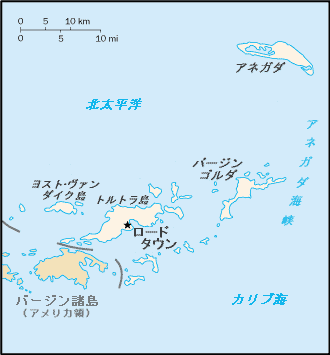Geography of the British Virgin Islands
|
|
|
Location:
|
Caribbean, between the Caribbean Sea and the North Atlantic Ocean, east of Puerto Rico |
|
Geographic coordinates:
| |
|
Map references:
|
Central America and the Caribbean |
|
Area:
|
total: 153 sq km
|
|
Area - comparative:
|
about 0.9 times the size of Washington, DC |
|
Land boundaries:
|
0 km |
|
Coastline:
|
80 km |
|
Maritime claims - as described in UNCLOS 1982 (see Notes and Definitions):
|
territorial sea: 3 NM
|
|
Climate:
|
subtropical; humid; temperatures moderated by trade winds |
|
Terrain:
|
coral islands relatively flat; volcanic islands steep, hilly |
|
Elevation extremes:
|
lowest point: Caribbean Sea 0 m
|
|
Natural resources:
|
NEGL |
|
Land use:
|
arable land: 20%
|
|
Irrigated land:
|
NA sq km |
|
Natural hazards:
|
hurricanes and tropical storms (July to October) |
|
Environment - current issues:
|
limited natural fresh water resources (except for a few seasonal streams and springs on Tortola, most of the islands' water supply comes from wells and rainwater catchments) |
|
Geography - note:
|
strong ties to nearby US Virgin Islands and Puerto Rico |
Information from The World Factbook.
- See also: British Virgin Islands

